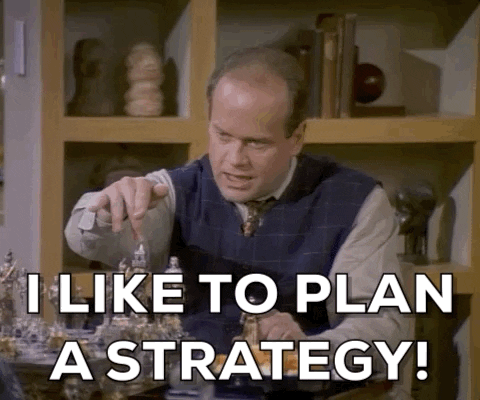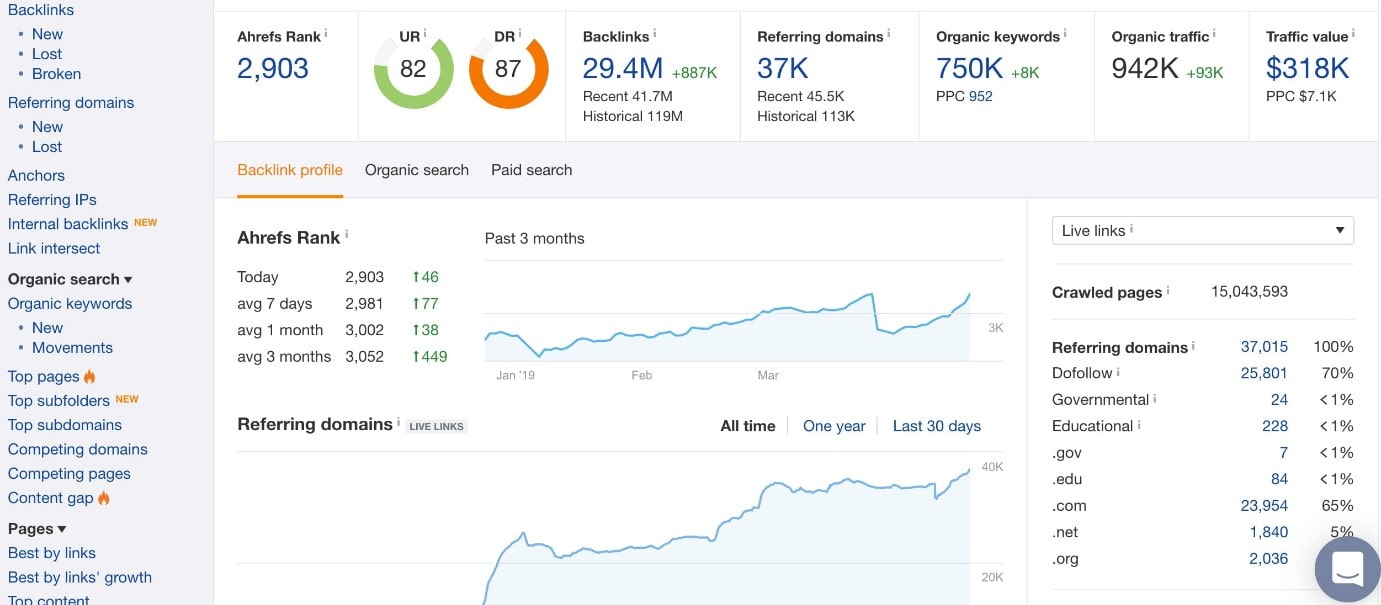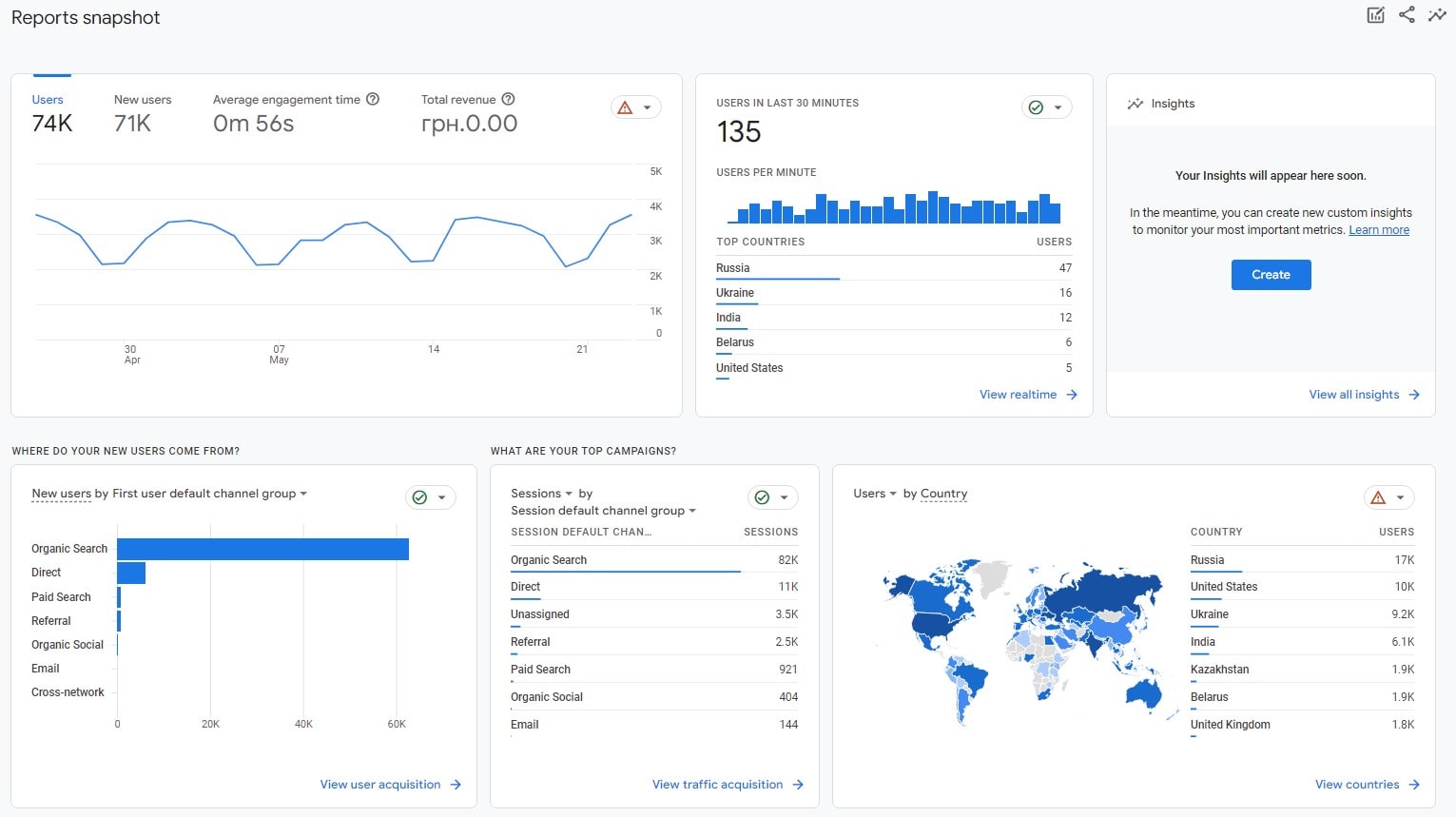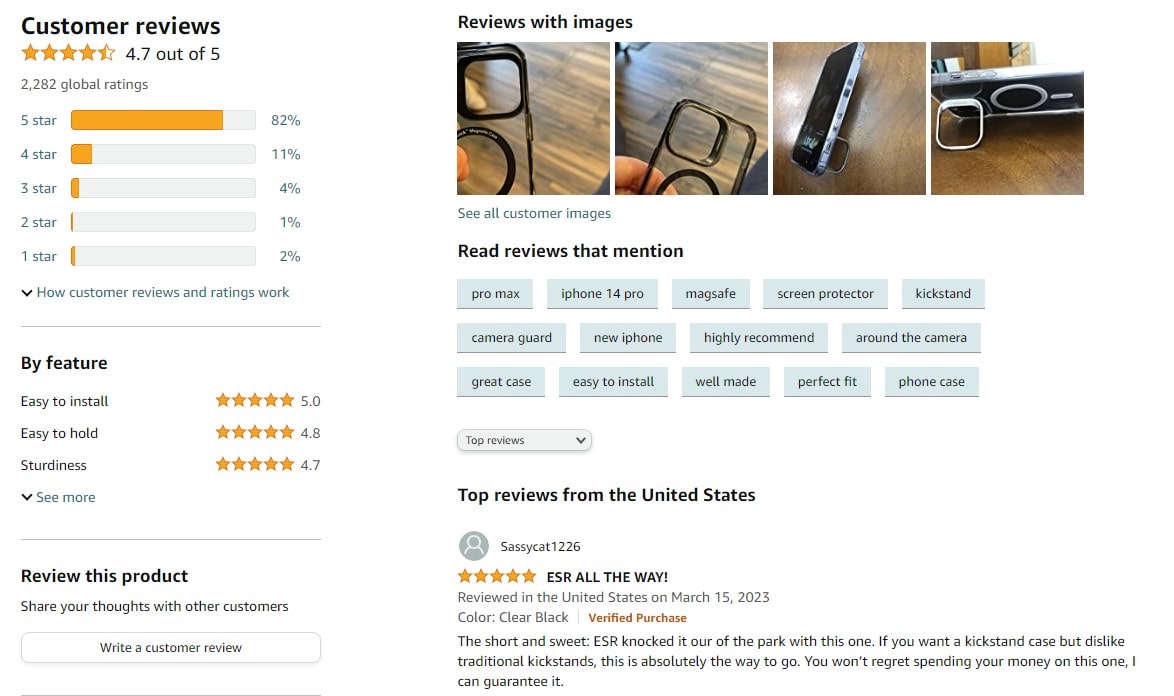In 2023, small business owners everywhere are rolling up their sleeves to craft a compelling marketing plan. The landscape is vast, yet with the right guidance, you can steer your business straight to success. Dive into our article packed with 15 actionable tips, each tailored to fit the unique dynamics of small enterprises. Here’s what’s in store:
- Pinpointing your target audience
- Mastering storytelling for your brand
- Leveraging digital tools like Plerdy for CRO & UX

When diving deep into these areas, remember that a focused approach, combined with real-world insights, can elevate your strategy to excellence. With the right tactics at your fingertips, every small business can shine in the marketing realm. So, why wait? Dive in and uncover these golden nuggets that promise to amp up your marketing game in no time! ⚡?
What is a Marketing Plan for Small Business?
A marketing plan isn’t just a fancy document; it’s a roadmap for businesses – especially small ones – to navigate the bustling marketplace. This strategic blueprint lays out the steps needed to promote products or services, capture the audience’s attention, and ultimately drive sales. For a small business in the bakery niche, a marketing plan could spell out strategies like:
- Hosting pop-up events at local farmers markets
- Collaborating with coffee shops to showcase baked goods
- Using social media platforms to highlight daily specials
Imagine a local gym trying to ramp up membership. Their marketing plan might zero in on:
- Offering free trial classes to entice potential members
- Setting up partnership deals with health food cafes nearby
- Running promotional campaigns during peak New Year resolutions season
In essence, a marketing plan breaks down the who, what, and how of your marketing efforts. From determining your target audience to deciding the best platforms to invest in, this plan provides clear directions. It’s the pulse of any marketing initiative, ensuring that businesses – no matter their size – stay on track and achieve the desired outcomes. With such a blueprint in place, businesses are geared up to tackle the market with precision and agility. ⚡?
Importance of a Strategic Marketing Plan for Small Business in 2023
In 2023, the essence of a strategic marketing plan remains undebated, especially for small businesses. Navigating the complex marketplace, a tailored marketing strategy offers the direction and focus necessary for growth. Let’s delve into the key reasons:
- Guided Decision-making: Without a clear plan, small enterprises can drift off course. For instance, a local artisan coffee shop might be tempted to jump onto the latest social media fad. But with a strategic marketing blueprint, they’ll stick to platforms where their target audience hangs out, ensuring better engagement and ROI.
- Resource Optimization: With finite resources, it’s critical for small businesses to get the most bang for their buck. Take a home-based bakery: Instead of spreading thin across multiple ad platforms, a detailed plan ensures they channel funds into areas bringing maximum returns, like local community outreach or collaborations with nearby eateries.
- Mitigated Risks: Every enterprise faces challenges. A handmade jewelry brand, for instance, might encounter a sudden surge in raw material costs. With a forward-thinking marketing plan, they can preemptively strategize ways to pivot their promotional efforts, highlighting limited-time collections or promoting upcycled designs.
In the ever-evolving dynamics of 2023, having a sound marketing strategy isn’t just beneficial—it’s indispensable. For small businesses, it’s the roadmap illuminating the path to sustainable growth, deeper customer engagement, and robust brand resilience.
Understanding Your Business Environment to Create a Marketing Plan

1. Conduct a Marketing SWOT Analysis
A SWOT analysis stands as a foundational pillar for any small business marketing plan. By breaking down Strengths, Weaknesses, Opportunities, and Threats, this method offers enterprises crystal-clear insights into their competitive landscape. Let’s dive deep into its application:
- Strengths: These are the advantages that set your enterprise apart. Imagine running a boutique fitness studio with proprietary workout routines; that’s a unique strength no competitor can replicate.
- Weaknesses: Recognizing areas for improvement can save resources. If a local organic juice bar struggles with timely home deliveries, identifying this weakness early can prompt them to streamline their distribution strategy.
- Opportunities: External factors can boost your business. An urban plant nursery might identify a rising trend in indoor gardening and then capitalize on it, positioning their offerings as essential for modern apartment living.
- Threats: External challenges can jeopardize growth. A brick-and-mortar bookshop, for instance, needs to be aware of digital reading platforms and strategize ways to offer unmatched in-store experiences.
Crafting a marketing plan without a SWOT is like sailing without a compass. It anchors decisions, directs resources, and fosters a proactive approach to market changes. In the rapidly shifting dynamics of 2023, small businesses that leverage a SWOT analysis not only survive but thrive, drawing clear paths in the crowded marketplace and identifying potential pitfalls long before they become insurmountable challenges.
2. Stay Updated with Marketing Market Trends
In the fast-paced business landscape of 2023, keeping a pulse on market trends stands central to a small business’s marketing plan. Failing to adapt to shifts can push businesses into obsolescence, while staying agile and informed paves the way to untapped opportunities. Delve into the implications:
- Consumer Preferences: Trends often mirror evolving consumer desires. Consider craft breweries: as preferences shift from hop-heavy IPAs to sour ales, adjusting product lines to reflect this can lead to increased sales.
- Technological Advances: From digital payment solutions to augmented reality shopping experiences, embracing modern tech can revolutionize a company’s operations. A neighborhood fashion retailer, for instance, can employ virtual try-ons, offering an edge over competitors.
- Sustainability Shifts: Sustainability isn’t just a buzzword; it’s a directive. A café integrating biodegradable packaging not only appeals to eco-conscious customers but also preempts potential future regulations.
- Competitive Analysis: Keeping an eye on competitors’ moves helps businesses anticipate market shifts. If a rival artisanal chocolate brand starts infusing exotic spices, it might hint at an emerging flavor trend worth exploring.
Harnessing market trends isn’t about blindly following the herd. It’s about astute observation and strategic implementation. In 2023, small businesses that seamlessly weave these trends into their marketing plans not only foster brand relevance but also set the stage for innovation and growth, marking their territory in the bustling marketplace.
Knowing Your Audience to Create a Marketing Plan

1. Segment your Market
Segmenting your market remains a cornerstone strategy in the small business marketing plan playbook. It’s not about casting the widest net but ensuring that every cast is precise and effective. Dive into the specifics:
- Demographics: By age, gender, or income, businesses can tailor their approach. An urban pet shop might target millennials with premium pet care products, recognizing their willingness to splurge on their furry companions.
- Geographic Location: Catering to specific regions can amplify relevance. A coastal cafe, for instance, could spotlight fresh seafood dishes, resonating with local tastes and preferences.
- Behavioral Patterns: This leans into how customers engage with your brand. A digital bookstore could recommend titles based on past purchases, fostering deeper client engagement.
- Psychographics: Values, attitudes, and lifestyles play pivotal roles. An eco-conscious apparel brand might resonate with consumers passionate about sustainability, paving the way for loyalty and trust.
For a small business, market segmentation isn’t just a strategy; it’s a lifeline. It offers the dexterity to pivot, ensuring every marketing dollar and effort counts. By segmenting, businesses can cater to specific audience clusters with laser-focused precision, creating resonating campaigns that speak directly to the consumer’s heart. In the bustling 2023 market scene, segmenting stands out as a strategy that enables small enterprises to punch above their weight, crafting impactful narratives that leave a mark.
2. Develop Customer Personas
Developing customer personas remains a pivotal step in any small business marketing plan. By honing in on your audience’s unique attributes, businesses can craft messages that resonate deeply and authentically. Here’s a snapshot of its significance:
- Clearer Communication: Understanding your personas allows for tailored messaging. Consider a fitness brand: for “Marathon Mike”, they might highlight endurance-focused gear, while for “Yoga Yasmine”, flexibility and comfort take center stage.
- Product Development: Aligning products with specific personas can lead to tailored solutions. An organic skincare line, knowing “Eco Emma” prioritizes sustainability, might introduce refillable packaging.
- Efficient Ad Spend: Targeted advertising becomes more feasible. A board game retailer, catering to “Strategy Steve”, can channel ads toward complex strategy games, optimizing ad budgets.
- Enhanced Customer Experience: Personalized experiences foster loyalty. A coffee subscription service, catering to “Latte Laura”, might send curated latte blends every month, deepening brand connection.
By centering their marketing strategies around well-defined customer personas, small businesses stand to gain unmatched clarity in their outreach efforts. No longer is the audience an abstract concept; it transforms into tangible archetypes, each with distinct needs, desires, and challenges. In the intricate dance of 2023’s marketing landscape, knowing your lead dancers – your personas – ensures your small business doesn’t step on any toes but instead waltzes gracefully to success.
3. Use Data-driven Insights for Personalization
Harnessing data-driven insights for personalization has become the linchpin of an effective small business marketing plan. The era where one-size-fits-all messaging could suffice has faded into the background. Today’s audience craves tailored interactions, and businesses equipped with smart data stand at the forefront. Delving deeper:
- Tailored Offers: With data in hand, businesses can craft special promotions. A gourmet burger joint, observing a spike in vegan orders, might roll out exclusive plant-based specials, delighting their vegan clientele.
- Precision Targeting: Businesses can zero in on niche audience segments. A local stationery store, gleaning that DIY craft kits are a hit with parents, could focus ads on local parenting groups.
- Optimized Customer Journey: Through insights, brands can tweak touchpoints for smoother experiences. An online tech store, noticing cart abandonment at payment, could introduce multiple secure payment methods.
- Predictive Analytics: Small businesses can anticipate customer needs. A luxury skincare brand, understanding seasonal purchase patterns, might introduce winter care ranges just as the chill sets in.
Empowering their strategies with data, small businesses navigate the 2023 market maze with finesse. These insights, when smartly integrated, allow businesses to pivot their tactics, ensuring they strike a chord with each customer. In the sprawling tapestry of modern marketing, weaving in data-driven personalization ensures that a business’s thread shines bright, distinct, and memorable.
Setting Clear Marketing Goals to Create a Marketing Plan
![]()
1. Align Marketing Objectives with Business Goals
To ensure long-term success, small businesses must intertwine their marketing objectives seamlessly with overarching business goals. Keeping marketing efforts and business aspirations on the same page isn’t just beneficial—it’s paramount. Here’s how it pans out in practice:
- Resource Optimization: By aligning goals, businesses avoid misallocating resources. Imagine a boutique bakery aiming to expand its wholesale operations. Focusing its marketing muscle on targeting local cafes and restaurants ensures they hit the mark.
- Clearer KPIs: This alignment leads to defined key performance indicators. For a yoga studio wanting to increase memberships, a campaign aiming to boost trial class sign-ups becomes a prime KPI.
- Unified Team Vision: With clear alignment, the entire team pushes in the same direction. A craft beer brewer, eyeing wider distribution, would benefit if the marketing crew championed this narrative in all promotional activities.
- Feedback Loop: Through syncing objectives, businesses can quickly recalibrate tactics based on outcomes. Should a sustainable shoe brand not see the expected traction from an eco-friendly campaign, they can swiftly pivot to another angle without veering off course.
With these anchors in place, small businesses set themselves up for success in the dynamic 2023 marketplace. Tightly woven objectives serve as a roadmap, guiding firms through the vast marketing landscape, ensuring each step taken resonates with the rhythm of the company’s heartbeat. Through alignment, every marketing endeavor becomes a harmonious extension of the business’s core ambitions.
2. Choose SMART Goals
Small businesses, particularly in today’s bustling market, can’t afford to set vague or ambiguous goals. Adopting SMART goals—Specific, Measurable, Achievable, Relevant, and Time-bound—infuses clarity and purpose into any marketing plan. Let’s delve into how this method revamps a small business’s strategy:
- Specific: Instead of merely wanting to “increase sales,” a local artisanal cheese shop might aim to “grow cheddar cheese sales by 15%.”
- Measurable: Digital boutiques can harness analytics tools, ensuring they’re on track. For example, tracking monthly website visitors or gauging newsletter open rates paints a vivid picture of progress.
- Achievable: An organic coffee shop may decide to tap into three new local suppliers in the next quarter. It’s challenging yet rooted in reality, pushing the team without overwhelming them.
- Relevant: Aligning with the broader business vision is crucial. An eco-friendly toy store launching a recycled materials product line ensures marketing efforts echo their sustainability ethos.
- Time-bound: Deadlines keep initiatives in check. If a handcrafted jewelry brand wants to introduce two new collections annually, setting launch dates ensures momentum.
Embracing SMART goals propels small businesses into actionable, well-defined endeavors. When integrated into a marketing plan, these goals carve out a roadmap, making every marketing effort more purposeful and impactful. In the 2023 business landscape, precision is the name of the game—and SMART goals serve as its playbook.
Embracing Digital Marketing to Create a Marketing Plan

1. Optimize for Mobile Experiences
Mobile optimization isn’t just a buzzword; it’s a cornerstone for any small business marketing plan. In an era where consumers whip out smartphones to find local eateries, shop for eclectic knick-knacks, or simply read reviews, businesses can’t sidestep this digital evolution. Here’s how some niches optimize for mobile experiences:
- Local Bakeries: Rather than just posting delicious pastries on Instagram, savvy bakeries embed swipe-up links leading to an easy-to-navigate mobile menu with click-and-collect options.
- Handmade Craft Shops: These businesses often utilize platforms like Etsy, ensuring product listings have mobile-responsive images and instant chat support for queries.
- Fitness Studios: From booking a yoga class to streaming a home workout, top-tier studios employ mobile apps that offer seamless user experiences.
- Eco-Resorts: Optimizing online brochures for mobile viewing, they streamline reservations with tap-to-call features and interactive maps guiding visitors right to their doorstep.
A mobile-optimized journey plays into modern consumption habits. Seamless navigation, lightning-fast load times, and intuitive interfaces lay the foundation. But sprinkling in the personal touch – like mobile loyalty rewards or geo-specific promotions – truly sets small businesses apart. In the digital tapestry of 2023, it’s imperative to weave in mobile-centric threads, ensuring every customer touchpoint feels tailored, efficient, and engaging. Optimizing for mobile doesn’t just keep businesses in the race; it sets the pace.
2. Invest in Content Marketing and SEO
For small businesses carving out a digital footprint, investing in content marketing combined with SEO isn’t just beneficial—it’s essential. This dynamic duo drives organic traffic, positions brands as industry leaders, and nurtures customer relationships. Delving into niche-specific examples helps illustrate the expansive reach:
- Artisan Coffee Shops: Crafting blogs about sourcing beans ethically not only educates readers but optimizes for terms like “sustainable coffee practices.”
- Boutique Fitness Centers: Sharing workout routines or nutrition tips pulls in those searching for localized fitness guidance.
- Independent Bookstores: Penning reviews on indie authors or hosting virtual book discussions optimizes for literary communities seeking unique reads.
Features of a robust content marketing and SEO approach:
- Tailored Keywords: Ensuring content aligns with what potential customers search for bridges the digital divide.
- Engaging Content: Offering value – whether through how-to guides, infographics, or video content – keeps visitors hooked.
- Regular Updates: Fresh content signals search engines that your site stays relevant and up-to-date.
- Backlink Building: Earning links from reputable sites boosts your authority in the eyes of search algorithms.
Bringing content marketing and SEO into your small business marketing plan is akin to crafting a digital magnet. It pulls in curious visitors, engages them with riveting content, and gradually transforms them into loyal patrons. By seamlessly integrating both strategies, businesses set themselves up for sustainable growth in an ever-evolving digital landscape.
3. Prioritize Social Media Platforms Relevant to your Audience
In the bustling digital landscape, small businesses must pinpoint which social media platforms resonate most with their target audience. By zeroing in on these spaces, businesses enhance their digital footprint, foster genuine connections, and drive impactful engagement.
Consider these niche examples:
- Bespoke Jewelry Designers: Platforms like Instagram and Pinterest, rich in visuals, let designers showcase their intricate pieces, drawing in potential clients who value unique craftsmanship.
- Local Organic Farms: Facebook communities and groups teem with consumers eager to connect with local growers, allowing farms to spotlight seasonal produce and share behind-the-scenes glimpses.
- Tech Startups: LinkedIn, a hub for professionals, allows tech companies to network, recruit talent, and highlight industry insights.
Key steps to align your small business marketing plan with relevant platforms:
- Assess Audience Demographics: Identify where your primary clientele hangs out online.
- Dive into Engagement Metrics: Track which platforms yield the most interactions and conversions.
- Allocate Resources Smartly: Focus on platforms that offer the best return on investment in terms of time and money.
- Stay Adaptable: Social media landscapes shift—ensure you keep tabs on emerging platforms and evolving audience preferences.
By embracing platforms that mirror the interests and habits of your audience, your small business not only carves out a stronger digital niche but also ensures every post, share, and comment amplifies your brand message effectively.
Marketing Budgeting and Resources to Create a Marketing Plan

1. Allocate Marketing Budget According to Marketing Priorities
Every small business owner knows the tug-of-war between lofty ambitions and a tight budget. To strike a balance, it’s crucial to allocate funds smartly, aligned with marketing priorities. Doing so ensures you get the biggest bang for your buck, propelling your venture toward success.
Niche examples offer clarity:
- Craft Coffee Roasters: Instead of spreading their budget thin across all advertising platforms, they pour a chunk of it into Instagram sponsored posts, capturing the attention of caffeine aficionados seeking artisanal brews.
- Eco-friendly Cosmetic Brands: They often gear their funds toward influencer partnerships, leveraging the trust these influencers have built with green-conscious consumers.
- Local Bookstores: Channeling their resources into community events and local PR helps them pull in neighborhood bibliophiles and foster loyalty.
Steps to nail budget allocation in your small business marketing plan:
- Pin Down Priorities: Determine which marketing avenues resonate most with your audience.
- Analyze Past Performance: Dive into past campaigns, figure out what worked, and put your money where the metrics are.
- Factor in Flexibility: Set aside a portion of the budget for emerging opportunities or to ramp up successful campaigns.
- Review Regularly: Financial landscapes evolve. Revisit and tweak your budget periodically to stay on top of changes.
By making informed budgetary decisions, small businesses ensure every dollar spent is a step closer to realizing their marketing vision, driving growth, and building lasting customer relationships.
2. Consider Leveraging Cost-effective Tools and Automation
In the bustling landscape of small business, every minute and dollar counts. Many entrepreneurs spread themselves too thin, trying to wear all hats, leading to burnout and inefficiency. Enter cost-effective tools and automation – a boon for those aiming to streamline their marketing plan without breaking the bank.
Check out these niche insights:
- Gourmet Food Trucks: Use scheduling tools to automate social media posts, teasing the week’s menu, ensuring a steady flow of patrons eager to gobble up daily specials.
- Handcrafted Jewelry Designers: Deploy email automation, sending personalized birthday offers, resulting in clients eagerly waiting to snap up that exclusive piece.
- Fitness Coaches: Harness CRM tools, keeping tabs on client progress and sending automated reminders, leading to consistent client engagement without additional effort.
Steps to effectively integrate tools in a small business marketing plan:
- Identify Repetitive Tasks: Pinpoint tasks you find yourself doing over and over. There’s probably an app for that.
- Test Before Investing: Many platforms offer trial versions. Take them for a spin to ensure they fit your needs.
- Train Your Team: Ensure everyone’s on board and understands the tools, maximizing efficiency across the board.
- Regularly Re-evaluate: The tech landscape evolves rapidly. Periodically check if there are updated tools that better suit your needs.
By smartly integrating cost-effective tools and automation, small businesses can ramp up efficiency, slash overheads, and focus on what they do best – nurturing their brand and clientele.
Monitoring and Adapting to Create a Marketing Plan

1. Utilize Marketing Analytics Tools for Performance Tracking
In the vast landscape of small business operations, data reigns supreme. While creativity sparks innovation, raw numbers and trends drive strategic decision-making. Harnessing the power of analytics tools becomes crucial for those fine-tuning their marketing plan, ensuring they’re not flying blind.
Dive into these tailored examples:
- Boutique Coffee Shops: By leveraging customer purchase patterns, discern peak sale hours and popular flavors, tailoring promotions accordingly.
- Indie Bookstores: Delve into website traffic sources, pinpointing which social media platform drives the most visits and tailoring content strategy based on this insight.
- Local Yoga Studios: Monitor class attendance metrics, determining which sessions or instructors pull the most crowd, and adjust scheduling to maximize participation.
Implementing analytics in your small business marketing plan involves:
- Setting Clear Benchmarks: Determine what success looks like for you—whether it’s website visits, sales conversions, or social media engagement.
- Tapping into User-friendly Tools: Platforms like Google Analytics or Tableau offer comprehensive insights without overwhelming users.
- Regularly Reviewing Data: Data isn’t static. Monthly check-ins ensure you stay ahead of emerging trends and adapt promptly.
- Taking Action: Numbers don’t mean much without implementation. Adjust your strategies based on what the data suggests.
Stepping up with robust analytics tools ensures small businesses don’t just go with the flow but ride the wave of data to amplified success.
2. Test, Refine, and Adapt Campaigns Regularly
In the dynamic landscape of small business marketing, staying still often means falling behind. It’s not enough to craft a marketing plan and let it ride indefinitely. Committing to ongoing testing, refining, and adapting ensures your campaigns remain fresh, relevant, and effective.
Let’s delve into a few tailored examples:
- Organic Cosmetics Stores: Launch two distinct ad creatives on social media. Track engagement rates, then double down on the most effective visuals and messaging.
- Home Gardening Centers: Introduce a loyalty program, then assess its uptake. If engagement dips, consider revamping rewards or shifting to exclusive online deals.
- Craft Beer Breweries: Host themed tasting events. Analyze attendee feedback to determine which brews to spotlight in future promotions.
For those invested in their small business marketing plan, the steps forward involve:
- Data Gathering: Use analytics tools to capture campaign performance metrics.
- Quick Iterations: Spot what’s working and ramp it up; identify underperformers and pivot swiftly.
- Staying Curious: Continually seek out emerging marketing strategies and tools, integrating the best into your existing plan.
- Engaging Your Audience: Lean into customer feedback. Let their voices guide adjustments to offers, messaging, or platforms.
The essence of robust marketing lies in its fluidity. By adopting a test-and-learn approach, small businesses stand primed to capture audience attention and outpace competitors with agility.
Engaging and Retaining Customers to Create a Marketing Plan

1. Prioritize Customer Relationships Through Excellent Service and Loyalty Programs
In the bustling sphere of small business marketing, fostering genuine customer relationships can set brands miles apart from competition. An outstanding service experience, topped with enticing loyalty programs, not only secures repeat business but transforms customers into brand advocates.
Take these niche examples:
- Artisanal Coffee Shops: Offer a stamp card where the tenth coffee is on the house. This drives repeat visits and creates a buzz among coffee enthusiasts.
- Boutique Fitness Studios: Provide members with exclusive access to advanced classes or workshops, incentivizing ongoing membership and community building.
- Local Bookstores: Host member-exclusive author events, giving loyal customers a chance to dive deeper into literary worlds.
To boost customer relationships in your small business marketing plan:
- Lead with Empathy: Understand and anticipate your customers’ needs, making every interaction memorable.
- Roll Out Loyalty Perks: Design programs that genuinely reward repeat business and referrals.
- Stay Engaged: Use social media or email campaigns to keep your customer base informed and excited about upcoming offers or events.
- Collect Feedback: Act on constructive feedback, showing customers that their opinions matter.
Investing in relationships pays dividends. By focusing on service excellence and loyalty incentives, small businesses can ensure their marketing plan remains customer-centric, leading to enhanced trust, satisfaction, and brand resonance.
Conclusion about Tips for Creating a Small Business Marketing Plan
In the intricate landscape of small business marketing in 2023, devising a robust plan is akin to crafting the perfect recipe—where each detail matters. From Nerdwallet’s insightful views on loans to HubSpot’s golden strategies on customer outreach, the arena is vast. If you’ve explored templates from Salesforce or tinkered with the calculators from SBA for funding prospects, you know the drill. A delightful blend of planning, prospecting, and managing assures that your small-business strategy remains both active and efficient. But, an element worth adding to your mix? Plerdy’s marketing tool for SEO & UX analysis—ensuring the finest web experience for your visitors. Whether you’re into eCommerce or offer freelance services, banking on this tool can be your legitimate step to digital excellence. Don’t settle for the basic; aim for the pinnacle. ⚡? Explore Plerdy today and set the gold standard in your niche.
